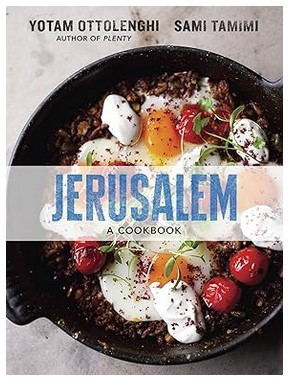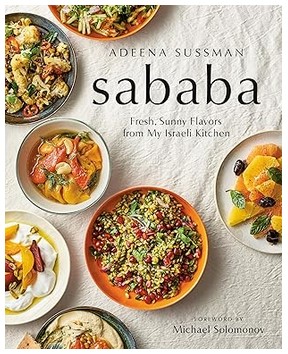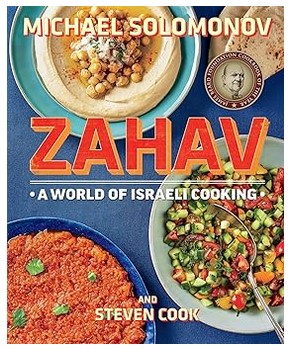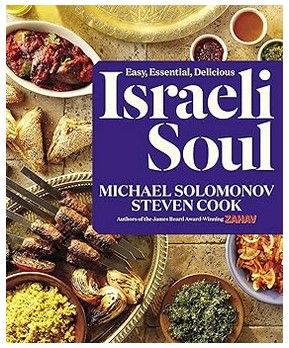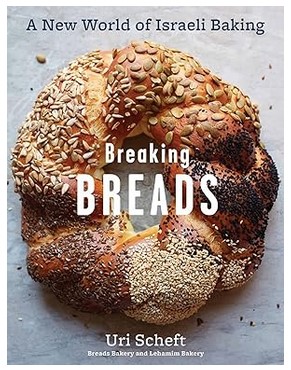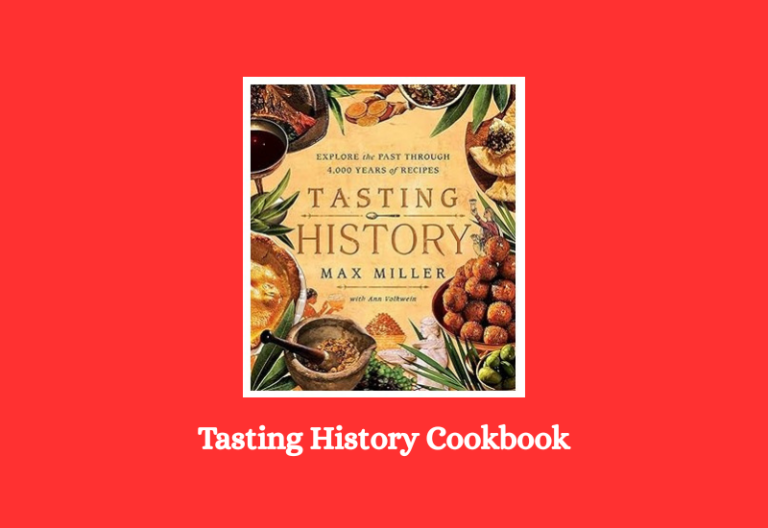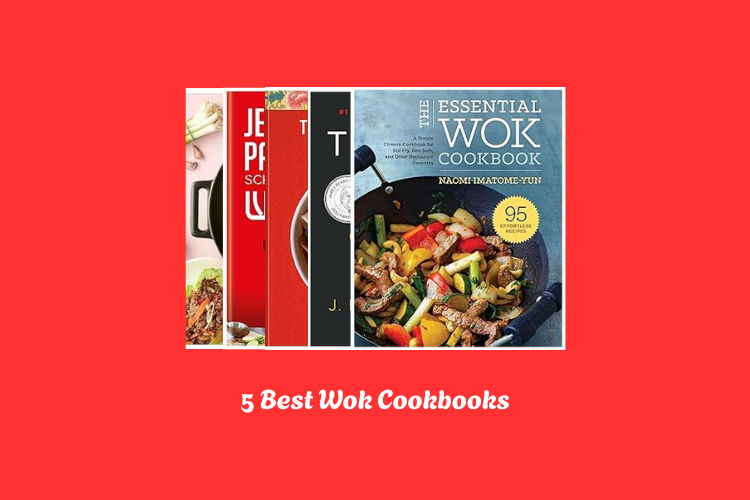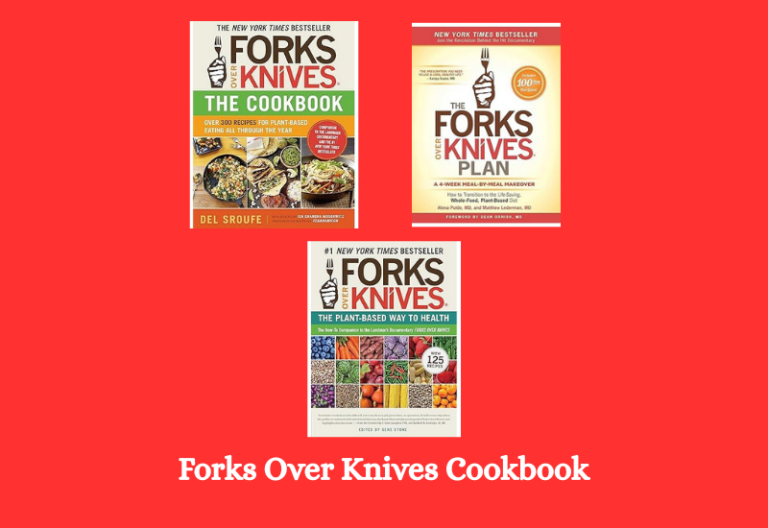5 Best Israeli Cookbooks [New Ingredients, New Techniques]
Israeli cuisine tells a story of culture, tradition, and vibrant flavors passed down through generations. From aromatic spices to fresh herbs, every dish carries a unique balance of history and creativity.
A good Israeli cookbook makes it possible to bring those flavors into your own kitchen, turning simple meals into memorable experiences. These books go beyond recipes by sharing culinary traditions and stories that connect food to everyday life.
You will discover bold salads, comforting stews, and street food favorites that capture the heart of Israeli cooking. Each cookbook offers a different perspective, reflecting the diverse influences of Middle Eastern, Mediterranean, and Jewish heritage.
Cooking with these guides opens the door to new ingredients, techniques, and flavor combinations. If you want to learn more than just how to cook, these books will guide you through the culture that makes Israeli cuisine so loved around the world.
5 Best Israeli Cookbooks 2025
1.
Cookbook Overview
A Personal Journey
Yotam Ottolenghi and Sami Tamimi were both born in Jerusalem in the same year. Ottolenghi grew up in the Jewish west side, while Tamimi was raised in the Arab east side. Their shared background and different perspectives gave them a special way to tell the story of the city’s food. This makes the book feel personal and full of heart.
Awards and Recognition
The book won the James Beard Award and the IACP Award, both of which honor excellence in cookbooks. Praise from food experts and readers alike shows its importance. Publications like Bon Appétit described the recipes as “vibrant and consistently delicious.”
A Rich Food Landscape
The authors explore Jerusalem’s cuisine as a blend of influences from many traditions. Each recipe reflects a unique mix of flavors that feels both familiar and new. The result is a tapestry of food that mirrors the spirit of the city.
Recipe Categories
Vegetable Dishes
Fresh vegetables play a central role in Israeli food. The book highlights creative ways to prepare them. From roasted eggplants with tahini to inventive salads, vegetables take on bold flavors. These recipes work well for everyday meals and festive tables alike.
Meat and Fish
Traditional lamb dishes, spiced chicken, and flavorful fish recipes add depth to the collection. Each dish uses spices and herbs that bring out rich aromas and tastes. These meals show how simple ingredients can become hearty and memorable.
Grains and Legumes
Lentils, rice, bulgur, and chickpeas appear often in Jerusalem’s kitchens. Recipes in this category focus on texture and balance. Comforting pilafs, stews, and grain-based sides showcase the variety and strength of these staples.
Desserts and Sweets
Sweet endings hold a special place in the book. Recipes include rich cakes, honey-soaked pastries, and desserts layered with nuts and spices. Each one reflects the influence of Middle Eastern tradition and the joy of shared meals.
Features
Cross-Cultural Stories
Each recipe comes with background notes. These stories explain how different communities contributed to the food of Jerusalem. This context makes cooking more meaningful and engaging.
Easy-to-Follow Instructions
The recipes are clear and approachable. Step-by-step directions allow both beginners and experienced cooks to enjoy them. Ingredients are explained in simple terms, and substitutes are often suggested.
Stunning Photography
The book features beautiful photos of the dishes and the city itself. These images inspire readers to try the recipes and connect with the culture. The visuals add depth and warmth, making the cookbook as enjoyable to browse as it is to cook from.
Variety and Balance
With 120 recipes, the cookbook offers something for every taste. Lighter dishes balance the richer ones, while familiar staples sit alongside new discoveries. The mix makes it a book that can be used again and again.
2.
Cookbook Overview
A Personal Connection
Adeena Sussman writes from her own home in Tel Aviv. Each morning, she visits Shuk Hacarmel, a busy market filled with fresh produce, snacks, cheeses, and spices. That daily experience shapes the recipes in her book. Readers feel the connection between market life and home cooking.
Global Yet Local
The book highlights how Israeli food is both deeply rooted in local traditions and influenced by many cultures. From Middle Eastern staples to Mediterranean touches, the recipes reflect Israel’s diverse food story.
Title Meaning
The word sababa comes from Hebrew, originally from Arabic, and means “everything is awesome.” That spirit of joy and comfort flows through the book. It makes cooking feel exciting and welcoming, not complicated.
Recipe Categories
Everyday Dishes
The book offers 125 recipes, many simple enough for daily meals. Fresh salads, dips, and quick side dishes give readers easy ways to add flavor to any table.
Street Food Favorites
Street food plays a big role in Israeli culture. Sussman includes recipes that bring this vibrant taste home. From savory snacks to small plates, readers can enjoy flavors usually found at local stalls.
Bold Main Courses
Meat and fish recipes shine with bold seasoning. Schug-marinated lamb chops, for example, highlight the spicy and herbal balance common in Israeli kitchens. These dishes are designed to impress but remain approachable.
Sweet Treats
The dessert section includes creative ideas, such as a tahini caramel tart. Familiar flavors are combined in new ways, blending comfort with surprise.
Features
Key Ingredients
The cookbook introduces important Israeli staples. Tahini, za’atar, date syrup, harissa, and sumac appear often. These ingredients add depth to simple meals and help recreate authentic taste at home.
Storytelling Style
Each recipe is tied to personal stories or cultural notes. Readers learn not only how to cook but also why the dish matters. This approach makes the book warm and engaging.
Market Inspiration
Recipes are built around seasonal, fresh produce. Figs, cherries, and olives appear often. The emphasis on fresh shopping mirrors the rhythm of Israeli cooking.
Easy Access for Home Cooks
Despite the variety of flavors, the recipes are designed for everyday kitchens. Sussman shows how to use international spices in simple ways, making them less intimidating for beginners.
3.
Cookbook Overview
About the Author
Michael Solomonov, a James Beard Award-winning chef, runs Philadelphia’s famous Zahav restaurant. He has become well known for his unique take on Israeli food. Critics praise him. The New York Times calls his work remarkable. Bon Appétit describes it as “an utter and total revelation.” Eater says, “Zahav defines Israeli cooking in America.”
Purpose of the Cookbook
Zahav introduces Israeli food to home cooks. Recipes are adapted to local ingredients while keeping authentic flavors. Solomonov shares both personal stories and professional techniques, making cooking approachable and enjoyable.
Recipe Categories
Mezze
Mezze are small dishes that are perfect for sharing. Zahav includes popular mezze like fried cauliflower and delicate hummus. These dishes are simple but full of flavor, making them great for appetizers or party spreads.
Soups and Stews
The book features soups like pink lentil with lamb meatballs. Critics describe it as “Jerusalem in a bowl.” Stews combine traditional spices with fresh, local produce, offering hearty meals that feel authentic.
Main Courses
Recipes for main dishes include whole roasted lamb shoulder with pomegranate and chickpeas. Persian wedding rice is another highlight, showing both technique and celebration in every dish. These recipes bring Israeli feasts to the home table.
Features
Easy-to-Follow Instructions
Solomonov writes in clear, simple language. Each step is detailed, making recipes easy for home cooks, even beginners. Ingredients are easy to find in most supermarkets.
Personal Stories
The cookbook mixes recipes with personal anecdotes. Solomonov shares memories of his birthplace and his journey in American kitchens. This storytelling connects readers with the food on a deeper level.
Adapted Techniques
Traditional Israeli recipes often require special methods or ingredients. Zahav adapts these to work in home kitchens without losing flavor. Seasonal ingredients are suggested, allowing cooks to use what is fresh and available locally.
Visual Appeal
Beautiful photography shows how dishes should look. Each image guides readers visually, inspiring confidence and creativity in their cooking.
4.
Cookbook Overview
About the Authors
Michael Solomonov and Steven Cook are experts in Israeli food. Solomonov has a deep knowledge of traditional dishes and modern cooking. His previous work, Zahav, won critical acclaim. Together, they searched Israel for recipes that capture the country’s flavor and history.
Purpose of the Book
The book focuses on real, everyday Israeli food. It shows dishes served in small restaurants, markets, and homes. Recipes are approachable. Readers can cook meals like falafel, roasted meats, stuffed vegetables, and chopped salads without special skills or equipment.
Style and Presentation
Striking photographs highlight textures, colors, and presentation. Step-by-step instructions guide readers through each recipe. The combination of history, culture, and practical tips makes the book engaging.
Recipe Categories
Street Food Favorites
Falafel, pita sandwiches, and juices appear in easy-to-follow versions. Recipes include tips for fast cooking while keeping traditional flavors. These dishes reflect Israel’s vibrant street food culture.
Grilled and Roasted Meats
Spice-rubbed meats and roasted dishes show home and restaurant cooking. Recipes guide readers on marinating, grilling, and roasting techniques. Each dish tastes rich but is simple to prepare.
Salads and Vegetables
Israeli cuisine uses fresh vegetables creatively. The book includes chopped salads, stuffed vegetables, and seasonal dishes. Each recipe highlights freshness and texture.
Dips, Pastries, and Desserts
Hummus appears in many styles, with multiple topping ideas. Pastries, ice creams, and shakes offer sweet endings to meals. Recipes are clear, making them easy to recreate at home.
Features
Step-by-Step Instructions
Every recipe has detailed steps. Cooking becomes easier even for beginners. Close-up photos show each stage clearly.
Cultural Insights
Chapters include short stories about dishes. Readers learn the history and meaning behind foods. It connects the reader to Israeli culture.
Adapted for Home Cooking
Recipes consider home kitchens. Ingredients are easy to find, and cooking methods are practical. Readers can make authentic dishes without special tools.
Visual Appeal
Photographs are vibrant and clear. Each dish is shown in full, along with steps. The visuals inspire readers to try recipes themselves.
5.
Cookbook Overview
About the Author
Uri Scheft runs the famous Breads Bakery in New York City and Lehamim Bakery in Tel Aviv. He combines his Scandinavian heritage, European pastry training, and life in Israel and New York City to offer unique baking experiences. His recipes are authentic yet creative, blending traditional and modern techniques.
Recognition
Named one of the Best Cookbooks of the Year by Food & Wine, The Boston Globe, The Los Angeles Times, The New York Times, The San Francisco Chronicle, USA Today, The Washington Post, and others, this book has received acclaim for its detailed instructions and beautiful photography.
Recipe Categories
Sweet Bakes
Recipes like Nutella-filled babkas, chocolate rugelach, and poppy seed hamantaschen show the sweet side of Israeli baking. Scheft adds his twists to classic treats, making them fresh and exciting for home bakers.
Savory Bakes
Bread lovers will enjoy potato and shakshuka focaccia, cheese bourekas, and Jerusalem bagels. These recipes combine Middle Eastern flavors with European techniques to create breads that feel both traditional and new.
Daily and Cultural Breads
Scheft introduces readers to Middle Eastern daily breads such as kubaneh and jachnun. These breads carry the history and culture of the region, making the cookbook not only about baking but also about understanding Israeli food traditions.
Features
Detailed Instructions
Every recipe includes clear, step-by-step guidance. Scheft explains techniques carefully, so even beginners can follow. Photos help show each stage, making baking less intimidating.
Key Dough Recipes
Several essential dough recipes form the base for many dishes. Learning these basics allows bakers to create multiple breads and pastries, encouraging creativity in the kitchen.
Global Influence
Recipes reflect Israeli, Middle Eastern, Eastern European, Scandinavian, and Mediterranean flavors. This variety makes the cookbook a global baking guide while staying true to Israeli roots.
Creativity Encouraged
Scheft gives ideas for personal twists on classics. Bakers can experiment with fillings, flavors, and shapes, bringing their own touch to every recipe.
Final Thoughts
Breaking Breads by Uri Scheft shows how rich and diverse Israeli baking can be. The book offers sweet treats, savory breads, and daily staples with clear instructions and helpful photos.
Its global influences make it perfect for anyone who wants to explore new flavors at home. For anyone exploring the world of Israeli baking, this book ranks among the Best Israeli Cookbooks and brings the flavors of Israel straight to your kitchen.

